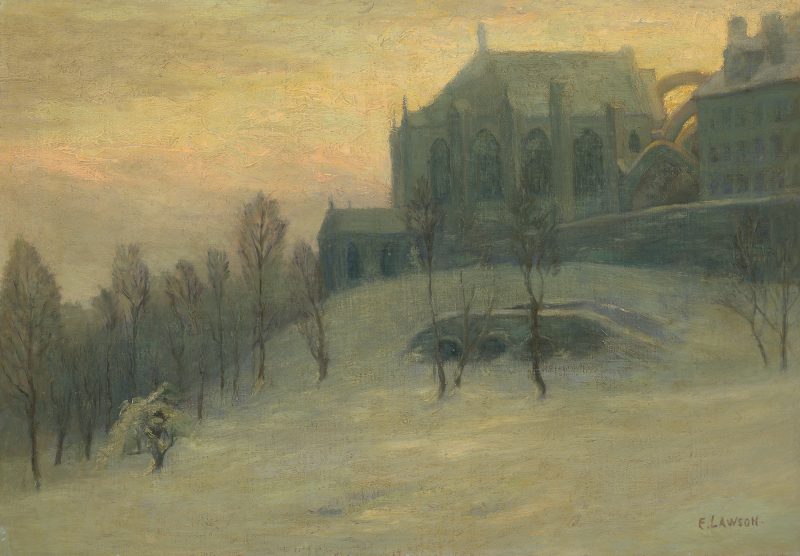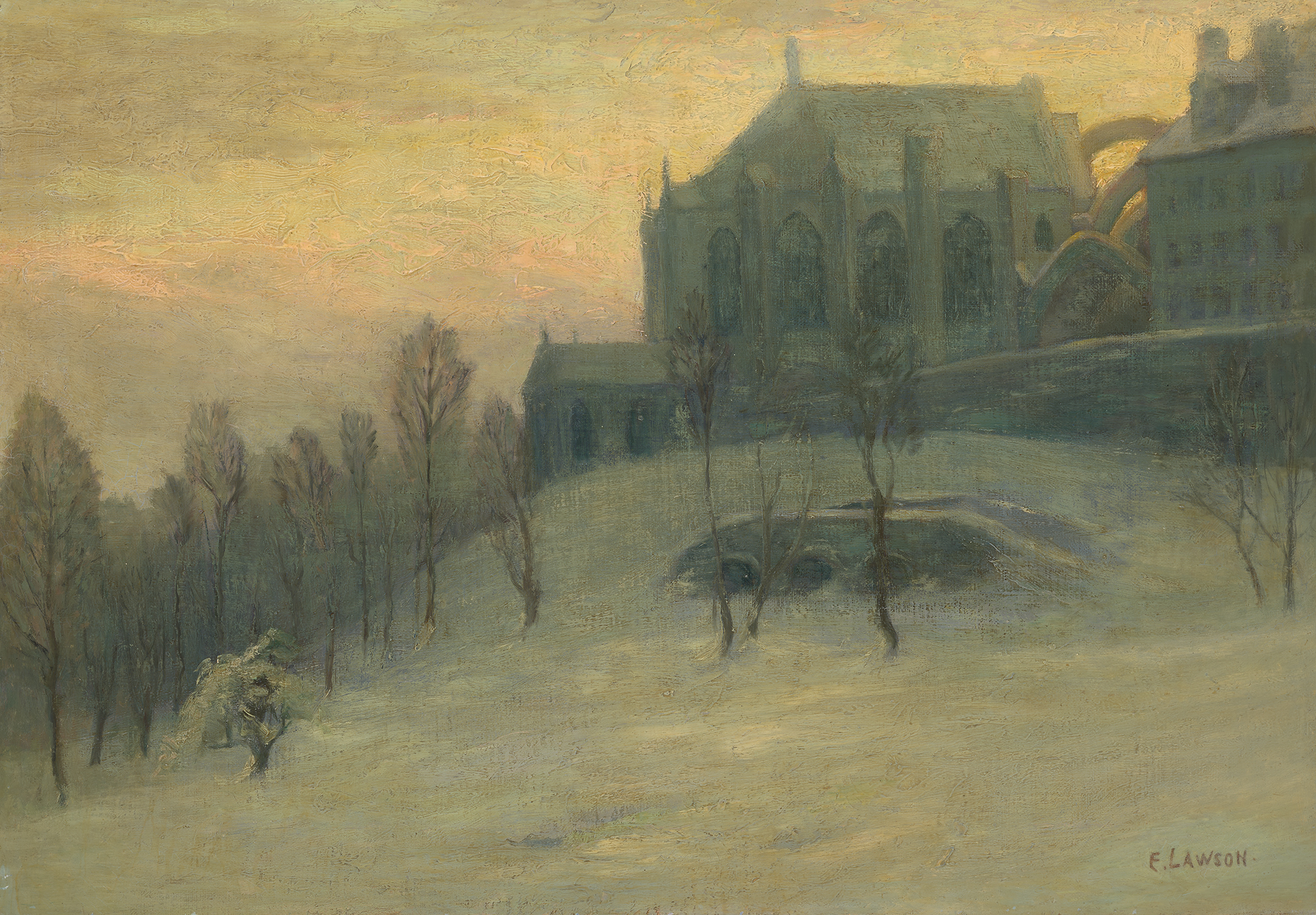
St. John the Divine, New York City, in Winter
Lawson, Ernest
about 1907–08
Artwork Information
-
Title:
St. John the Divine, New York City, in Winter
-
Artist:
Lawson, Ernest
-
Artist Bio:
American, 1873–1939
-
Date:
about 1907–08
-
Medium:
Oil on canvas
-
Dimensions:
16 1/8 x 23 inches
-
Credit Line:
Wichita Art Museum, Gift of Mr. and Mrs. Duane J. Buckley in memory of Floyd T. Amsden
-
Object Number:
1981.31
-
Display:
Not Currently on Display
About the Artwork
Throughout his career, the noted 20th century American impressionist Ernest Lawson was deeply absorbed in the beauty of the American landscape and in capturing momentary impressions of the changing seasons and the changing times of day. Lawson painted in many regions of the United States, Canada, and Europe but his favorite site was the area around New York City.
This oil on canvas titled Saint John the Divine, New York City, in Winter is a highly accomplished work and one of Lawson’s finest early compositions. Based on the artist’s stylistic development and the construction stage of the cathedral as shown here, the date of execution would quite probably be 1907.
The specific subject matter depicted is the Cathedral of Saint John situated on a snow-covered hill with a dense thicket of bare winter trees at the left and a small footbridge near the base of the hill. One of the delights here is the sense of winter chill, which the artist has so skillfully caught. Even more significant, however, are the gentle calm of the luminous atmosphere and the haunting tonal nuances of the glowing winter sky at twilight which effectively harmonize with the blue-gray shadows cast across the snow-covered foreground and the erect but wispy trees. Added interest is achieved in the contrast between the stately architecture and the soft shimmering quality of the setting. Yet the two seem clearly to belong together: one symbolizing stability and permanence, the other expressing the reality of fleeting change.
Lawson was a gentle and contemplative individual and a profoundly dedicated painter who’s prolific accomplishments won him eminence within his profession and full membership in the National Academy of Design. But at the same time his life was surrounded by tragic sadness. He was born in Halifax, Nova Scotia in 1873 and at 15 years of age in 1888 settled briefly in Kansas City, Missouri. As a young artist, he studied with John Twachtman and J. Alden Weir and made several trips to Paris where in 1893 he met Somerset Maugham and some years later was fictionalized as the painter “Frederic Lawson” in Maugham’s novel Of Human Bondage. Lawson exhibited with The Eight in 1908 and again in the Armory Show in 1913.
In 1916 with his wife and daughter he visited Spain where he executed a number of paintings. Although his early career had brought him fame and on some occasions considerable fortune, changing tastes and times following World War I and during the Great Depression of the 1930s led to extreme financial hardships, discouragement, and ill health. In the final decade of his life he spent much of his time as a guest of close personal friends in Florida and in 1939 he died destitute in Miami.
